 "yamahog" (yamahog)
"yamahog" (yamahog)
05/28/2015 at 22:47 • Filed to: None
 24
24
 27
27
 "yamahog" (yamahog)
"yamahog" (yamahog)
05/28/2015 at 22:47 • Filed to: None |  24 24
|  27 27 |
So this blast from the past was linked to a Jalopnik article this morning, and I sighed and shook my head.
!!! UNKNOWN CONTENT TYPE !!!
Before I delve in, let’s get some terminology down.
BUMPER BEAM - aka impact beam, it’s the steel/aluminum/sometimes even composite beam running crosscar in the front and rear. Exhibit A:
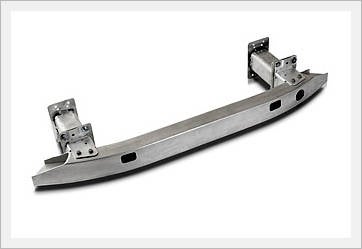
!!! UNKNOWN CONTENT TYPE !!!
FASCIA - The pretty painted plastic (usually a Thermoplastic Olefin nowadays) front and rear piece that covers the bumper and is essentially “the face” of the car. Aka the thing most people call “the bumper,” as a throwback to when those things were actually made of metal and weighed a ton. Exhibit G8:
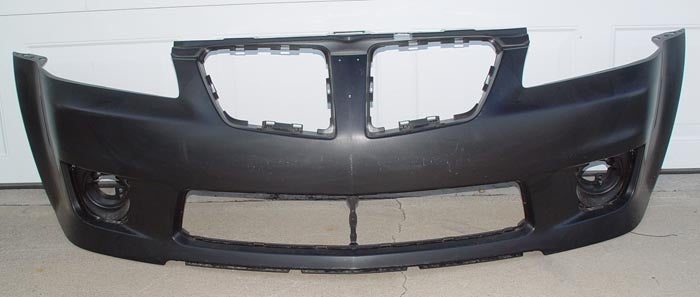
!!! UNKNOWN CONTENT TYPE !!!
Ok Torch, here we go.
An ideal car bumper should allow you to impact another car or object, stationary or motile, at speeds below, say 5 mph, with zero visible damage.
First off, !!!error: Indecipherable SUB-paragraph formatting!!! will tell you that fascias are already designed for this type of thing, and so much more. Actually, maybe read it before carrying on, it might answer even more questions.
Secondly..... do you even FMVSS? Part 581, Bumper Standard:
581.5 Requirements.
(a) Each vehicle shall meet the damage criteria of §§ 581.5(c)(1) through 581.5(c)(9) when impacted by a pendulum-type test device in accordance with the procedures of § 581.7(b), under the conditions of § 581.6, at an impact speed of 1.5 m.p.h., and when impacted by a pendulum-type test device in accordance with the procedures of § 581.7(a) at 2.5 m.p.h., followed by an impact into a fixed collision barrier that is perpendicular to the line of travel of the vehicle, while traveling longitudinally forward, then longitudinally rearward, under the conditions of § 581.6, at 2.5 m.p.h.
Here’s the pendulum device, btw. Its weight is that of the test vehicle:
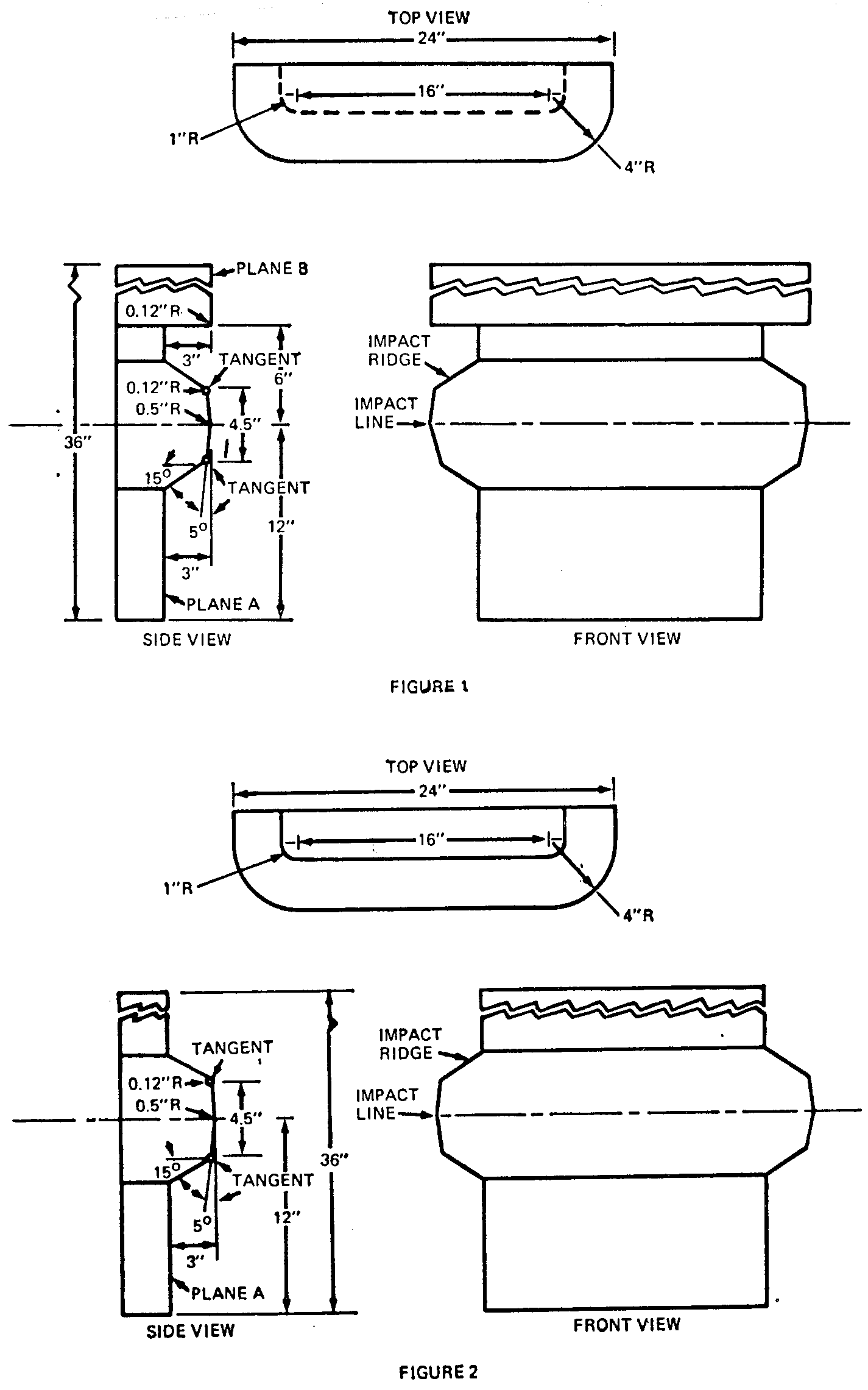
1.5mph and 2.5mph sound very small, but !!!error: Indecipherable SUB-paragraph formatting!!!
The agency concluded that reducing the impact speed from 5 mph to 2.5 front and rear impact speed best satisfied the statutory criteria that the bumper standard “seek to obtain maximum feasible reduction in costs to the public and to the consumer.” The agency also concluded that reducing the impact speed to 2.5 mph and eliminating the Phase II damage criteria would not have an adverse effect on safety as measured by the number of crashes, deaths or injuries that occur annually.The agency set the protection standard at 2.5 mph after studying the comparable repair costs of a 5 mph bumper that has higher energy absorption capacity along with additional cost and weight.After public hearings involving all parties, including consumers and manufacturers, NHTSA concluded that the public is assured of the largest net benefits under a standard that requires 2.5 mph protection for both the front and rear bumpers.
When Torch touched on that he had this to say:
As an extra little f-u to consumers, damage was now restricted to “unlimited” as well.
Uh, no . Here’s everything that has to remain perfectly functional and intact after impact:
Lamps, reflectors, hood, trunk, doors, fuel, cooling, exhaust, propulsion, steering and braking systems, no fasteners can be released or broken, and for the exterior itself:
(8) The exterior surfaces shall have no separations of surface materials, paint, polymeric coatings, or other covering materials from the surface to which they are bonded, and no permanent deviations from their original contours 30 minutes after completion of each pendulum and barrier impact, except where such damage occurs to the bumper face bar and the components and associated fasteners that directly attach the bumper face bar to the chassis frame.
I cannot overstate the amount of engineering that goes into tweaking surfaces to properly protect all these components and still maintain the styling theme. Speaking of styling, Torch says:
The Bumper Conundrum is the name professional bumper researchers have given to the two-axis relationship of bumper use and aesthetics. Broken down to its simplest level, it comes to this axiom: the better a bumper is at absorbing damage, the less people like the way it looks.
Citation needed. Do you know what urethane is? If not, do you remember the good ole days when they first started using plastic fascias and they started cracking? Are you familiar with shitty body kits? That’s what happens when you try to make something stiff enough for a heavy pendulum to bounce off of rather than flex. Shit cracks eventually. Look at any sweet 80s Monte Carlo or Firebird that’s spent time in the sun. Nowadays people don’t even want to use urethane fascias on pre-production cars.
And as for this cool graphic:
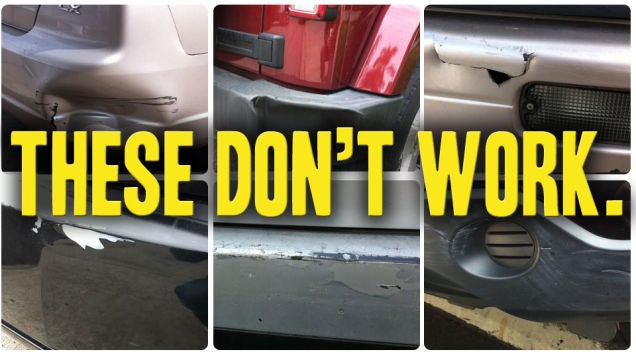
Starting from top left: There is no way that was under 5mph, that should pop out from the underside, what praytell should engineers do differently to protect your fascia from a spear attack, and for the bottom row, how the hell do you expect paint to look perfect after a scraping impact?? x3.
And I would love to be the fly on the wall when you tell a designer they should incorporate the hideous exposed bumpers of yesteryear into their concepts.
As for the expense to replace.... there is a metric for that as well. The IIHS and some Euro agency I forget the name of are ALL OVER THAT repair cost. There’s only so much dollar-wise that can be damaged.
Siiiiiiiiiiiigh.
 DrJohannVegas
> yamahog
DrJohannVegas
> yamahog
05/28/2015 at 22:49 |
|
I get all hot and bothered when people quote FMVSS. I need to sit down...
 yamahog
> DrJohannVegas
yamahog
> DrJohannVegas
05/28/2015 at 22:51 |
|
It’s basically foreplay here in the Travahog household.
 CB
> yamahog
CB
> yamahog
05/28/2015 at 22:52 |
|
Thanks for the write up, Yama!
 yamahog
> CB
yamahog
> CB
05/28/2015 at 22:54 |
|
Glad you appreciated it :)
 dogisbadob
> yamahog
dogisbadob
> yamahog
05/28/2015 at 22:54 |
|
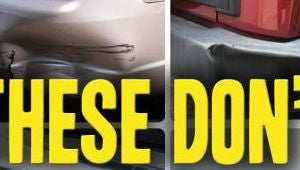
wow that sure took a hammerhead fist punch :p
 dogisbadob
> yamahog
dogisbadob
> yamahog
05/28/2015 at 22:54 |
|
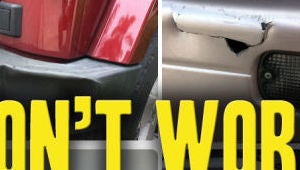
duct tape is your friend
 DrJohannVegas
> yamahog
DrJohannVegas
> yamahog
05/28/2015 at 22:59 |
|
I tend to need FMVSS 103-compliant systems when talking about FMVSS 209. OOF.
 desertdog5051
> yamahog
desertdog5051
> yamahog
05/28/2015 at 23:05 |
|
Interesting post. Well thought out and presented. Thumbs up to you.
 yamahog
> DrJohannVegas
yamahog
> DrJohannVegas
05/28/2015 at 23:07 |
|
Kinky.
 SnapUndersteer, Italian Spiderman
> yamahog
SnapUndersteer, Italian Spiderman
> yamahog
05/28/2015 at 23:11 |
|
Well said.... as an automotive engineer, it’s always bugged me when people harp on safety standards (or really anything else) without fully understanding them in the first place
 Denver Is Stuck In The 90s
> yamahog
Denver Is Stuck In The 90s
> yamahog
05/28/2015 at 23:44 |
|
Safety shamfety, I rear ended my HOUSE while backing into my driveway to unload some stuff and it did nothing to my truck. There is a big ass crack in the brick and you cant even tell my truck hit anything.
 Santiago of Escuderia Boricua
> DrJohannVegas
Santiago of Escuderia Boricua
> DrJohannVegas
05/29/2015 at 00:03 |
|
At least for what I do, FMVSS is kind of a joke and we design to a much higher standard.
 DrJohannVegas
> Santiago of Escuderia Boricua
DrJohannVegas
> Santiago of Escuderia Boricua
05/29/2015 at 00:05 |
|
Look, some of us keep our kinks simple. No need to brag.
 Santiago of Escuderia Boricua
> yamahog
Santiago of Escuderia Boricua
> yamahog
05/29/2015 at 00:08 |
|
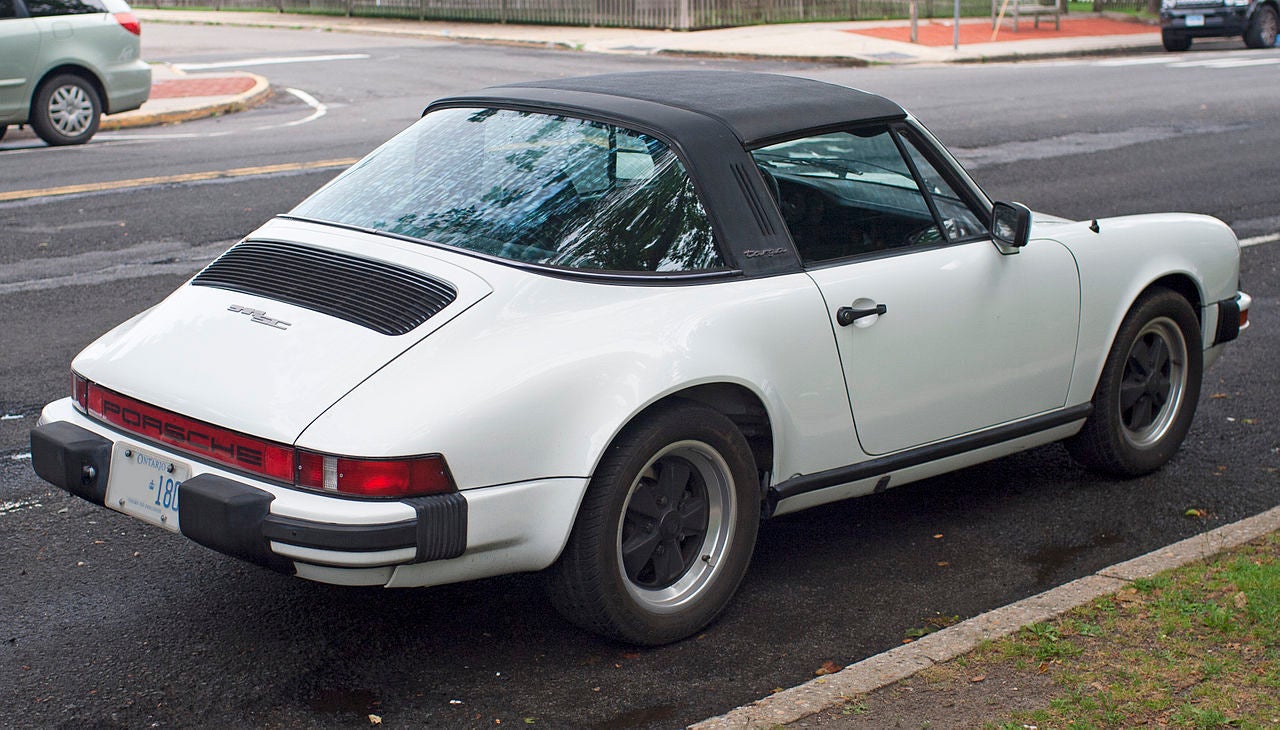
You’re saying this doesn’t look fantastic?
Also, why so mad about a three year old article?
 Santiago of Escuderia Boricua
> DrJohannVegas
Santiago of Escuderia Boricua
> DrJohannVegas
05/29/2015 at 00:12 |
|
Personally, I also prefer SFI 3.2A/5 to FMVSS 103. Different strokes, I guess
 Jason Torchinsky
> yamahog
Jason Torchinsky
> yamahog
05/29/2015 at 00:27 |
|
Okay, all valid points. For what it’s worth, I know modern bumpers are way, way better at their jobs than any of those old chrome monstrosities were. I get it. My problem is really with the fascias. The painted fascias are quite expensive and don’t seem to weather real-world damage all that well. It’s more of a design issue than engineering.
That said, this was all interesting and I promise to reconsider my stance on bumpers.
 Berang
> yamahog
Berang
> yamahog
05/29/2015 at 04:26 |
|
I almost feel like you’ve never accidentally whacked something at sub 5mph speed with a car before.
 yamahog
> Berang
yamahog
> Berang
05/29/2015 at 06:06 |
|
I feel like you have no idea what I do for a living.
 yamahog
> Jason Torchinsky
yamahog
> Jason Torchinsky
05/29/2015 at 06:26 |
|
Thanks for the response. The low speed damage you get with a plastic fascia is typically notbad.jpg, as this Oppo user discovered: http://oppositelock.kinja.com/the-time-i-was…
Bumps can pop back out, and you can touch up paint and scuffs. I would guess that people just either don’t care or get told to replace/repaint the whole thing, or put a hole in it (which could’ve killed a hydraulic bumper system of old). Outside of purposeful throwbacks like a Prowler or something, requiring the vintage plastic bumpers for the sake of repairablity would come at a huge tradeoff for design, not too mention safety. The energy absorbers, crush cans, etc that hide between bumper beam and fascia nowadays would either not exist or would make the exposed beam even larger and uglier. I can already hear the people crying out for rebellion against the nasty government should such a requirement come to pass :)
 Berang
> yamahog
Berang
> yamahog
05/29/2015 at 06:32 |
|
I would guess something that would influence your bumper bias?
 yamahog
> Berang
yamahog
> Berang
05/29/2015 at 06:50 |
|
If by “bias” you mean “actual knowledge of the subject matter,” sure. But do tell me more about all those low speed impacts I’ve obviously never seen, let alone engineered vehicles to survive. Do you argue with Steve Lehto’s interpretation of the law as well?
 yamahog
> Santiago of Escuderia Boricua
yamahog
> Santiago of Escuderia Boricua
05/29/2015 at 06:52 |
|
Yes, FMVSS is just one of the multiple standards used. Depending on where the car is being sold, it has to meet multiple regions’ requirements and/or the strictest.
 Berang
> yamahog
Berang
> yamahog
05/29/2015 at 06:56 |
|
Well if you’re the expert my disinterested observations of real world impacts shouldn’t make any difference to you. It’s not like a wrote an opinion piece about why modern bumpers don’t bump well either. Also while calling out somebody else for their lack of suitable background experience, you didn’t actually introduce what your qualifications were either. So forgive me for not being psychic.
 jkm7680
> yamahog
jkm7680
> yamahog
05/29/2015 at 18:24 |
|

Well, it could always be worse.
 The Compromiser
> yamahog
The Compromiser
> yamahog
05/29/2015 at 19:47 |
|
As someone who used to make a metric shittonne (shittonne being the measurement unit for the metric not the system standard) of specific safety critical items, I applaud and commiserate. Every time I get into a “that’s not how that works. That’s not how any of this works” mode, I die a little inside. Why shouldn’t an LC pedal box fit in a 1970 era Charger you goatee wearing motherfucker! And you! Take off the fucking raybans and cut that rediculous and unsafe beard, you hipster, pompous, shit monkey!!!
See???? Died a little there again...
 deekster_caddy
> yamahog
deekster_caddy
> yamahog
06/02/2015 at 09:13 |
|
So I have been thinking about this a lot lately - there is still an inherit problem with today’s plastic wraparound hide-it-all “bumpers”. In the “old days” when a bumper got a dent, people lived with it and moved on. These days, the bumper gets a “dent” and it ends up being a large crack and half your bumper rips off, or people have gobs of duct tape holding their bumper together. They are aerodynamic pieces with little plastic retainers - rip a few off and the thing is a big scoop catching the wind, flapping around behind the car that goes back to place when they stop, so the owner has no idea how bad it is.
Old steel/chrome bumpers got a dent and it stayed there. They did add some ‘cushion’ to the bumpers with shock absorbers and rubber padding, but the big metal parts had the advantage in that they could withstand some abuse. Today’s bumpers can’t withstand much abuse besides a specific direction of hit. Hit from the side or corner and it’s crumble city.
Granted there have been pedestrian safety improvements, but that’s more the shape than the material.
I decided to write this after following a RAV-4 to work today with duct tape literally covering (or replacing) over 1/3 of the rear bumper.
 deekster_caddy
> jkm7680
deekster_caddy
> jkm7680
06/02/2015 at 09:13 |
|
Great movie. “What phony dog poo?”